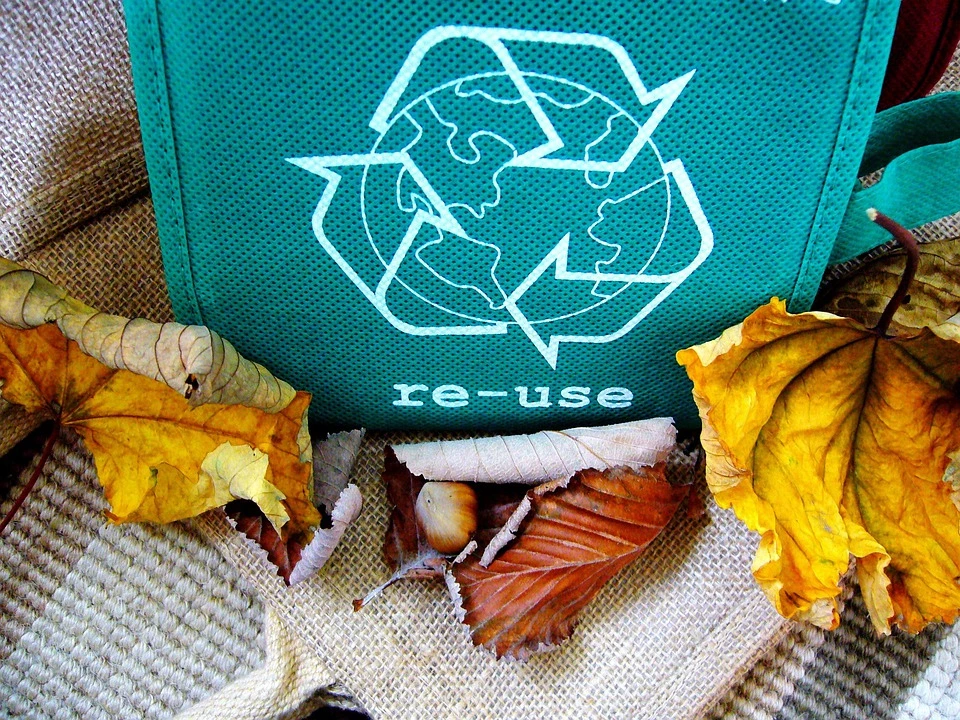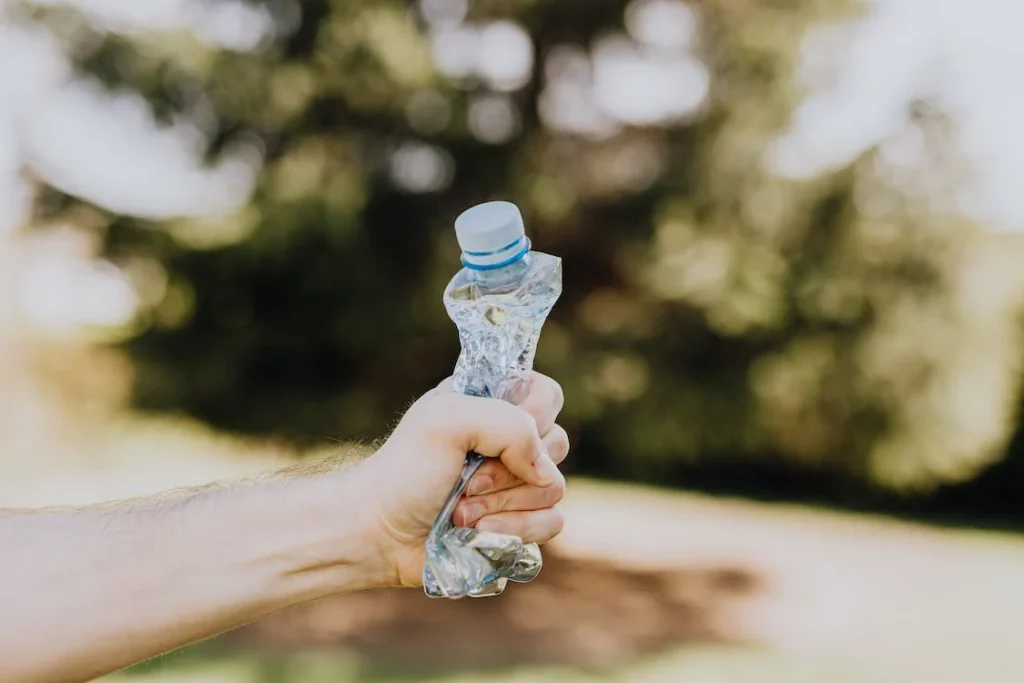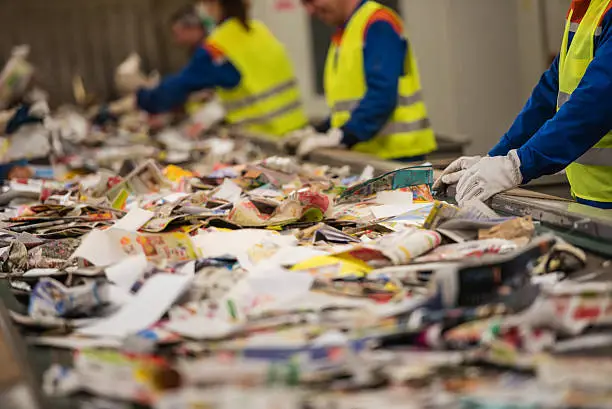Recycling might seem like a no-brainer. If recycling will save the planet, then why not toss the plastic bottle in a recycling bin instead of the trash?
Well, the recycling system isn’t all it’s made out to be, heating up the arguments for and against recycling.
Some claim that recycling is the only thing we can do to preserve natural resources and stop toxic waste dumping.
Others argue that it’s just pushing our waste materials off-shore and the benefit we get isn’t worth the time and money we spend to recycle.
In this article, we’re going to take a closer look at the advantages and disadvantages of recycling.
Recycling Definition

Recycling means converting waste products into reusable material. Instead of being taken to a landfill to sit and decay, recyclables are sorted and reprocessed into raw materials.
Disadvantages of Recycling
Recycling has quite a few disadvantages that aren’t popular to discuss. Here are the 5 biggest disadvantages of recycling.
- Recycling programs are expensive to implement and support
- Recycling programs create greenhouse gases while transporting, shipping, and processing recycled materials
- US recycling is usually sent overseas and becomes a major pollutant
- Recycled products are often of lower quality, but this is not true for metals that can be recycled infinitely
- Many areas don’t have curbisde recycling which makes people bring recyclables to unsanitary and even unsafe recycling centers to drop off items
Many argue that we can solve these recycling dilemmas, and we agree. The problem is the cost and ongoing financial commitment required to establish and maintain functional recycling programs.
Most municipal governments don’t have the money to establish and maintain expensive recycling programs.
As the market for recycled materials has shifted, they’re forced to pay for recycling or abandon recycling programs altogether.
We believe that the best way to facilitate discussion is to investigate both sides of an issue to help identify problems, solutions, and points of agreement. Let’s take a balanced look at the pros and cons of recycling.
Check out this fantastic segment produced by NPR on the complications that surround recycling. Most Americans think our recycling programs are working, but they’re not. This video tells you why.
Pros and Cons of Recycling
| Pros of Recycling | Cons of Recycling |
|---|---|
| Reduced Energy Consumption | Recycling Can Be Expensive |
| Decreased Pollution | High Up-Front Costs |
| Slows The Rate Of Resource Depletion | Needs More Global Buy-In |
| Fights Global Warming | Recycled Products Are Often Of Lesser Quality |
| Decreases Landfill Waste | Recycling Sites Are Commonly Unsafe |
Advantages – What are the Pros of Recycling?

- Reduced Energy Consumption
- Decreased Pollution
- Slows The Rate Of Resource Depletion
- Fights Global Warming
- Decreases Landfill Waste
Recycling is one of the best things we can do as individual citizens to decrease pollution on our planet.
It’s notably very environmentally friendly, and it reduces our energy consumption on a global scale.
There are numerous social benefits of recycling as well, which include community pride, increased health, and a sense of social empowerment.
Let’s take a closer look at the most important and widespread advantages of recycling.
1. Reduced Energy Consumption
This first benefit is what catapults recycling into the discussion of green energy.
As humans, our demand for energy is ever-increasing. This continues to be the case as more countries are being modernized and introduced to the wonderful world of technology.
Recycling plays its part in the green energy debate by reducing the amount of energy required to manufacture certain products.
This is especially true for the rare and valuable minerals used for manufacturing electronics. One of the benefits of recycling electronics is that it allows us to recover these metals.
- Gold
- Silver
- Platinum
- Copper
- Lead
- Cadmium
- Neodymium
Recyclable metals can be purified and reused indefinitely. This decreases our carbon footprint by limiting mining, processing, transportation, and methane from decay.
This reduces greenhouse gas emissions generated by the manufacturing process and lowers global energy consumption.
Recycled metals cost much less than their virgin ore counterparts. What’s better is that there is 100 times more gold in a ton of e-waste than in a ton of gold ore!
This is just one example of ways that energy consumption is drastically decreased by processing and using recyclable materials. The same is true for glass, aluminum, tin, and paper.
2. Decreased Pollution

Coke bottles, soda cans, and those plastic ring holders. What do all of them have in common?
They’re one of the worst sources of pollution, water contamination, and soil contamination on our planet.
When you recycle these things you do your part to keep them out of landfills, waterways, and incinerators.
| Recycling in Development | Hard to Recycle | Can Be Recycled Forever | Can Be Recycled Many Times |
| Uranium | Non-PET Plastics | Steel | Textiles and Clothing |
| Lithium | Waxed Cartons | Aluminum | Paper |
| Low-value Plastics (like cling film and packaging) | Tetra-Pak Containers | Tin | Lead-Acid Battery Components |
| Polyethylene | Glass | High-value Plastics | |
| Polystyrene | Gold | Oil | |
| Silver | |||
| Copper | |||
| Platinum | |||
| Glass |
Glass bottles, soda cans, tin cans, aluminum foil, and other glass and metal materials can be recycled forever. There is no reason to not recycle them.
Plastic is a different story, but we’ll get to that later in our discussion of the disadvantages of recycling.
The fact is that the less waste we throw onto the planet, the cleaner and safer it will be for future generations to come.
Air pollution causes and effects are usually blamed on vehicles and burning fossil fuels. However, landfills are notorious for high methane emissions which contribute to global warming.
The more we can recycle, the more we keep out of landfills – a win for the land and the air.
3. Slows the Rate of Resource Depletion
Recycling is an act that can heavily impact the deforestation problem on the earth. One of the benefits of recycling paper is that fewer trees that need to be cut down and processed.
Sooner or later, the earth will run out of raw materials.
- Some materials, like uranium, are known to have decades’ worth of untapped reserves
- Other materials, like lithium, are expected to become rare by 2025. Considering how dependent we are on these rare earth minerals, we should be more concerned about preserving what we have.
- By recycling, you limit the need to mine those raw materials to make new products. Instead, your recycled material is used.
The same can be said for all metals and glass that you recycle. They’re just as good after recycling as they were when they were brand-new.
One of the benefits of recycling steel is that once it’s collected and shredded it gets remelted to make new steel bars and sheets. These have the same value as new materials because they’re just as good.
Metals are perfect candidates for creating a circular economy around recycled materials.
4. Fights Global Warming
Global warming continues to be a heated debate across the planet.
We’ve already mentioned that recycling reduces greenhouse gas emissions by reducing transportation and mining emissions.
The other way recycling helps reduce carbon footprint is by reducing the amount of waste that’s burned to make room for new garbage.
- Many countries, including Germany, have tried to solve energy and waste problems at the same time by burning trash in waste-to-energy power plants.
- This is just a fancy form of incineration which releases toxic greenhouse gases into the atmosphere, increasing global warming.
- Waste-to-energy is detrimental to our non-renewable resource supply because reusable materials aren’t recovered – they’re just incinerated and gone forever.
The fact is that there is so much waste on the planet that burning it becomes one of the only options to avoid creating more massive landfill sites that are contaminating our soil and groundwater.
By recycling, less material becomes waste that needs to be burned, and instead, it’s used in ways that are more beneficial to the environment.
5. Decreases Landfill Waste
Recycling used products means less trash in landfills. This is a very good thing since landfills slowly destroy the natural environment.
Nearly 17% of methane emissions in the United States come from landfills. That’s 109 million metric tons of carbon dioxide equivalent released into the atmosphere from our garbage.
Landfills also leach toxic chemicals into the ground as the garbage decays. These chemicals end up in the watershed by rainwater runoff or leaching into the water table.
Existing recycling programs prevent tons of waste from being dumped into landfills each year, and they’re only getting better.
The more we focus on ensuring that our personal waste gets diverted into the recycling stream, the more we will help decrease the carbon emissions coming from landfills where we live.
Cons of Recycling – The Disadvantages of Recycling

- Recycling Can Be Expensive
- High Up-Front Costs
- Needs Global Acceptance
- Recycled Products Are Often Of Lesser Quality
- Recycling Sites Can Be Unsafe
Now let’s get into the disadvantages of recycling – a more interesting and controversial side of the topic.
1. Recycling Can Be Expensive
There are many hidden costs and processes associated with recycling plants. They have to be sorted, bailed, trucked, shipped, stored, processed, and reshipped as new materials.
Metals and glass make a lot of sense to recycle and there is a great market for these recycled materials. After recycling these materials are just as good as raw materials and can be recycled forever.
Plastics are a different story. Even though many are recyclable, the problem of plastic is getting worse, not better.
When China was taking the majority of America’s plastic recycling, we were selling them our recyclable plastics, making a nice income while pushing our plastic waste to a different shore.
China stopped taking our recyclable plastics so most of them are going to places like Indonesia or getting put into landfills.
Municipalities are now paying to get rid of plastics instead of making money on them.
This means that many are now putting plastics into the landfill or stopping recycling programs altogether because they don’t have the money to maintain the program.
- In 2021, 85% of plastics used in America went into landfills – even those sorted for recycling.
- That same year about 10% of plastics were incinerated.
- Only about 5% of the plastics used in the US were recycled.
China has one of the largest plastic recycling programs in the world and is no longer accepting US plastics, but it recycles only 30% of its domestic plastic waste. The rest is incinerated – producing greenhouse gases.
This problem has been fueled by several factors.
- It’s more expensive to recycle plastic than make new plastic.
- Plastic recycling uses a ton of water, so the US is not interested in building plastic recycling plants.
- The high cost of plastic recycling is found in all areas of global economics – from polluted natural resources and atmosphere to the pollution of drinking water.
The fact is that the only way to solve the problem of plastic pollution is to stop using it. Yes, it is recyclable, but no, the recycling usually isn’t worth the cost to do so.
2. High Up-Front Costs

We’ve already discussed the fact that recycling is expensive. Let’s dive a little further into the high initial cost of developing recycling programs.
While all recycling programs are expensive, some pay off in the long run.
For instance, battery recycling, paper recycling, and steel recycling plants create highly reusable products that bring a great income to producers.
Even recycling clothes can produce new fabrics indefinitely – with zero waste.
However, establishing new recycling protocols and infrastructure has a high initial cost.
It takes trucks, machinery, shipping containers, employees, and all of the attendant expenses to acquire and maintain the entire system.
If a municipality doesn’t have a reliable buyer for recyclable goods then they have to pay someone to haul the recyclables away – an unenviable position that’s a reality in many recycling programs.
3. Needs Global Acceptance
Some areas of the world are careful to reduce what goes into landfills to an absolute minimum.
However, not every region has the same focus on the environment and sustainability.
Without truly global participation in recycling, source reduction, and personal consumption reduction, the problem of pollution and trashed recyclables will simply shift from place to place.
Recycling programs aim to make participation as easy as possible, but it also results in a lot of recycling contamination from dirty food items and non-recyclables.
When this happens, entire loads of recyclables can be hauled to the landfill instead of recycled because the cost to sort out every contaminated item is just too high.
So, while we do need global participation in recycling programs, there are two more things we need to make recycling programs truly valuable.
- Education – Many people want to recycle but are confused about what they can recycle and where to put it. This leads many to avoid recycling so they don’t mess up.
- Packaging Reduction – Metals are completely recyclable, forever, and so is glass. Plastic could be in theory, but there are so many types. Some are highly valuable PET plastics and others are low-value cling films and wrappers.
When the world rejects the use of thin film plastics and uses only recyclable plastics we’ll be well on our way to making recycling work.
Ideally, we’ll get to a place where we have reliable alternatives to plastics that we can use while avoiding any harm to the environment.
4. Recycled Products Are Often of Lesser Quality
This point is absolutely not true for high-value recyclables like glass, all types of metal, lithium, and even uranium. Metals and glass can be recycled forever with no decrease in quality.
However, for paper and plastic goods it can certainly be true that items made from recycled materials won’t hold up as long as those made from new materials.
We contend that the lack of quality is not due to the recycled material but the overzealous source reduction that often accompanies recycled products.
Here’s an example: we never promote using single-use water bottles, but we’ll use them as our example.
- You purchase a virgin-material water bottle and notice that the bottle has a nice weight to it – it doesn’t spill or crush when you open it. It’s a premium experience.
- You finish your water and drop the bottle and cap in a recycling container.
- The plastic is recycled and turned back into plastic pellets.
- The plastic pellets are used to make new water bottles, but source reduction measures are put in place to make the recovered plastic stretch to make more bottles.
- The next time you get a bottle of water made with recycled plastic you open the cap and the bottle crushes in your hand – water goes everywhere.
This isn’t a case of the plastic being inferior, but the source reduction methods use less of it to produce the bottle.
Consumers can make a difference by choosing products made with recycled materials that are also robust and can be reused for months or years before they’re recycled again or discarded.
5. Recycling Sites Can Be Unsafe

Some states also have designated recycling drop-off areas for deposit containers like cans and bottles. Residents must go to these facilities to drop off cans and bottles to get their deposit back.
These facilities are usually smelly, full of bacteria, and often in unsafe areas. This discourages more vulnerable residents from using recycling services.
Areas that require residents to come to the city landfill to drop off sorted recyclables have the worst levels of participation. These sites are dirty, inconvenient, and surrounded by unsafe conditions.
Final Thoughts
Recycling is good. When it works.
The problem is we’ve used recycling as an excuse for consumerism, convenience, and overconsumption. We’re producing more waste materials than we can process. Our waste output per person is increasing yearly.
We can debate the pros and cons of recycling until the end of time, but the solution has to include a reduction in our personal demands.
The production of single-use containers won’t diminish until we stop buying them. The production of cheap, thin, throw-away clothing won’t stop until we stop buying into it.
The good news is that recyclables like metals and glass are infinitely recyclable, so the more of us participate the better off earth will be.
The only material that’s really debatable when it comes to recycling is plastic. When the issue of plastics is sorted out we’ll see a huge leap forward in recycling and resource preservation.
Where do you stand on the matter? Let us know in the comments below!
